Make It Your Own: Wedding Invitation Design
Posted on May 12 2019
Your wedding invitation suite is your guests’ “first look” at the type of event they are to expect. Will it be an intimate backyard affair, an elegant black tie evening, colorful international fanfare, or a weekend-long celebration? The content, colors, typeface, and other details in the suite will all carry meaning for your guests. (Find information on different printing and paper options here.)

It may also be your parents’ first formal introduction of you to their friends and colleagues, which carries a different set of considerations. How your invitations are composed and addressed will communicate if you were taught etiquette and social norms.
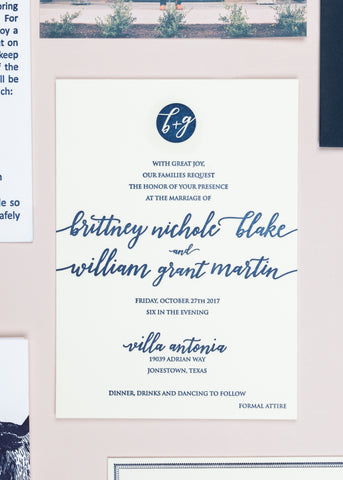
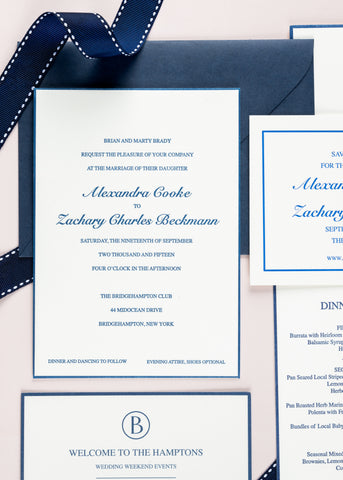
The invitation
Your “wedding invitation” is the invitation to your ceremony, and should communicate the type of ceremony your guests will be attending, religious or non-religious. It also acknowledge those who are financing the wedding: Parents, grandparents, dear friends of the couple, or if the couple is financing it themselves.
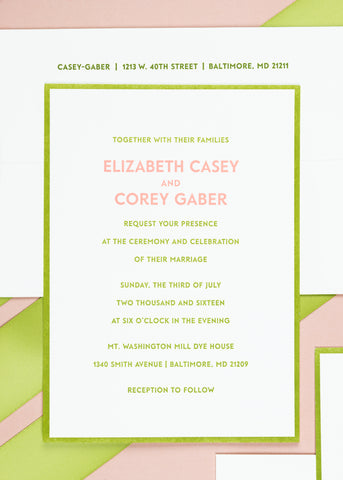
Find examples of wedding invitation wording here, which differ depending on the type of ceremony planned and who is hosting the event. Consider how you want to address your guests, your family presentation, and the feeling you want guests to come away with.
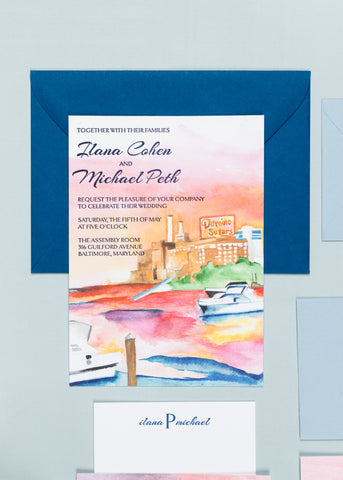
Addressing your guests
One detail often overlooked is how the envelopes are addressed. Handwritten envelopes -- either in your handwriting or that of a paid calligrapher -- are more personal. Digital printing is also an option, but never use sticky labels unless they are incorporated in your envelope design.
The language you use can be formal or casual, but should always reflect the relationship and status of the individuals you are inviting. Find examples of formal and informal addressing here.

Inner envelopes can be used if you have a special envelope liner that you would like to not have ripped open, or a wax seal. Address the inner envelopes of your invitation suite as well, using formal or informal names only, depending on your relationship with the guest. The envelope(s) should be addressed with the specific guest names (i.e., adult names only if kids are not invited).
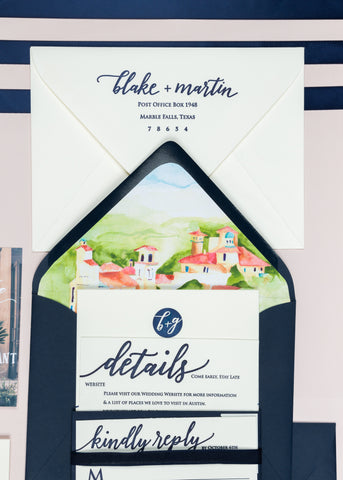
Hand canceling postage
Hand canceling a postage stamp protects your invitation suite; your invitation will be hand-sorted rather than machine sorted. “Hand canceling” is when a human being at the post office stamps your envelope with a dated ink stamp over the postage, to ensure the stamp can’t be used again. This manual stamping will add travel time for your invitations, so plan accordingly. It is worth it! Before you are ready to send out your invitations, go to your local post office and ask when they prefer to have customers come in to hand cancel their postage stamps. Watch a video of post sorting here.
Looking for more information?
- Tiny Dog Press, Printing & Paper
- Tiny Dog Press, Wedding Invitation Examples
- Tiny Dog Press, Wedding Suite Options
- Tiny Dog Press, Invitation Etiquette
- Tiny Dog Press, Addressing
- The Knot, invitation etiquette
- Brides, wedding invite wording
